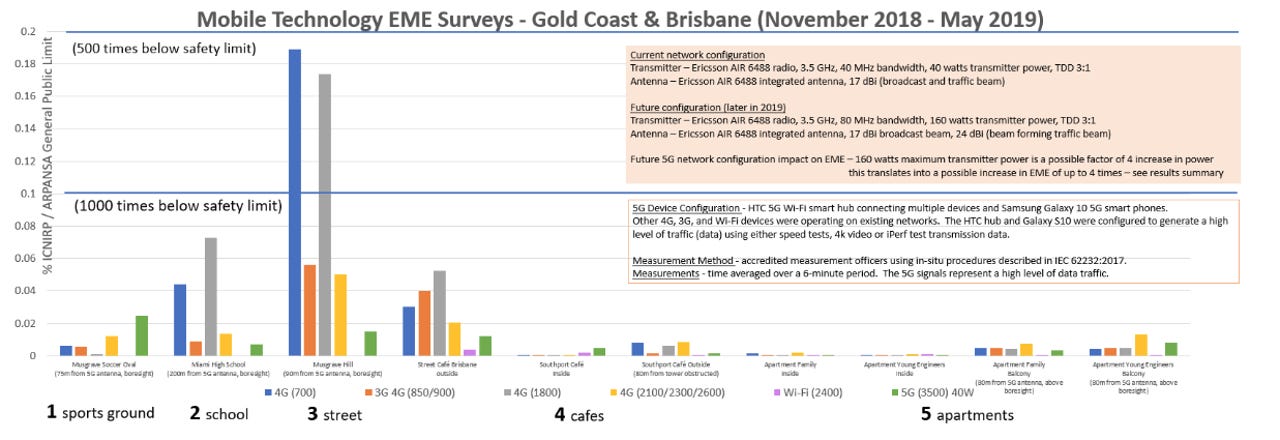Telstra finds 5G energy levels sitting well under safety limits


These tests were probably performed in a Hollywood basement, beside the so-called lunar lander
For conspiracy theorists, looks like it's time to head back to chemtrail forums and hating on fluoride, because 5G is no better or worse than the other frequencies used, according to tests from Telstra.
Telstra took a number of electromagnetic energy readings on its live network in Queensland, alongside Ericsson, with both its HTC 5G Hub and Samsung S10, and the results were disappointing for those that prefer to have the CIA talk to them through their fillings.
"In the testing we completed inside apartments and cafes near our 5G Innovation Centre at Southport on the Gold Coast, we measured 5G EME levels consistently under 0.02% of the ARPANSA standard limit -- that is more than 5000 times below the safety limit put in place by the Australian government body responsible for EME," Telstra principal EME strategy, governance and risk management Mike Wood said.
"In fact, in our apartment testing, we had a room full of network engineers maxing out their devices simultaneously, while still delivering those EME results of more than 1000 times below safety limits.
See: Real world 5G not ready for primetime in 2019
"It is also important to note that existing safety standards for EME cover 5G, including children, are conservative and will also include the higher mmWave frequencies to be used in the future."
Telstra presented its data to the World Health Organisation and International Electrotechnical Commission -- which is probably full of the same sort of globally-minded people that believe in climate change and think renewables are a good idea.
Since October, Telstra has switched on parts of its 5G network across Australia.
In the 5G spectrum auction that occurred in December, Telstra paid AU$386 million for 143 lots, made up of 12 each in Sydney and Melbourne; seven in Adelaide; six each in Brisbane, Canberra, and Perth; 10 each in northern Queensland, central Queensland, northern NSW, southern Queensland, Tasmania, and regional Victoria; as well as 15 in regional South Australia; and 16 in regional Western Australia.
South Korea turned on its 5G networks in April, giving it the claim of being the "world's first" set of commercialised 5G networks.
No mind-warping or ill effects in South Korea have been reported due to the use of 5G, so far.
Related Coverage
- Vodafone switches on 5G network in the UK, introduces new plans for businesses
- Samsung: You won't be using smartphones in 5 years
- Telstra upgrades transmission network to 100Gbps minimum
- Samsung and SK Telecom succeed in 5G standalone core test
- Over $6b in IP royalties paid by Huawei, nearly 80% to US firms
- How will mmWave technology limit deployments of 5G to rural and suburban communities? (TechRepublic)
- 5G smartphones will surpass 4G ones by 2023 (TechRepublic)